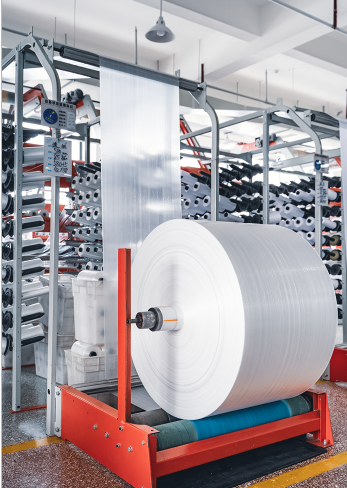Polyethylene liners are essential in bulk packaging, especially within the flexible intermediate bulk container (FIBC) market. These liners serve as protective barriers, enhancing the functionality of bulk bags by offering a moisture barrier, contamination prevention, and chemical resistance.
This article explores polyethylene liners’ roles, types, and benefits in bulk bags. It will equip you with the knowledge to make informed decisions, whether you’re a packaging industry beginner or looking to refine your bulk packaging solutions.
Polyethylene liners, often called “poly liners,” are flexible liners made from durable thermoplastic polyethylene. In addition to their use in bulk bags (FIBCs), polyethelene tank lining provides enhanced protection for large storage tanks, safeguarding against chemical corrosion, leaks, and contamination. These liners are available in various types and sizes, making them versatile for multiple applications.
Polyethylene liners provide numerous benefits that make them indispensable across industries. Here are the primary reasons to consider using bulk bag liners:
Sensitive materials like food products, pharmaceuticals, and chemicals must be protected from contaminants. Polyethylene liners act as a barrier, ensuring the integrity of the contents.
These liners act as a moisture barrier, essential in preventing water ingress. This property is significant for transporting hygroscopic materials, which are prone to absorbing moisture, potentially leading to spoilage or caking.
Industries dealing with hazardous or reactive substances benefit greatly from polyethylene’s chemical resistance. HDPE liners are particularly suited for environments with high chemical exposure.
Using liners extends the life of bulk bags by shielding them from damage caused by sharp or abrasive materials. They also reduce friction during transport, preventing spills and maintaining bag strength. This added protection minimizes waste and cuts costs, making operations smoother and more efficient.
These are reusable and recyclable, contributing to sustainable packaging solutions for environmentally conscious businesses. They extend the life of bulk bags by offering extra protection, and their recyclability aligns with circular economy goals. This makes them ideal for companies looking to reduce waste and support greener operations.
Bulk bag liners come in various types to meet specific requirements. Understanding the differences can help you choose the right one for your needs.
These liners have folded sides, allowing them to expand and hold more material. This flexibility ensures they can handle varying capacities while maintaining structure, making them suitable for heavy-duty and lightweight contents.
Applications: Precision and cleanliness are vital for fine powders and materials requiring extra stability, especially in industries like food processing and pharmaceuticals.
A cylindrical design with an open top and heat-sealed bottom, ensuring straightforward handling during filling and discharge operations. Its simple structure minimizes spillage and enhances efficiency during transit.
Applications: It is used for granular materials, liquids, and powders, providing a seamless barrier against contamination and leakage.
Custom-shaped liners are designed to fit the bulk bag’s exact dimensions, offering seamless integration and enhanced efficiency. These liners minimize waste by reducing material movement and ensuring even distribution during transport.
Applications: Provide superior performance for materials requiring precise containment, such as sensitive powders or liquids.
Liners with built-in baffles maintain the bulk square shape, preventing bulging and ensuring better stackability. This design minimizes wasted space during storage and transit, enhancing operational efficiency.
Applications: It is essential for maximizing storage and transportation efficiency, particularly in industries requiring precise space management, such as warehousing and logistics.
Selecting the right liner involves considering several factors to ensure optimal performance and protection of your materials:
XIFA Group is a global leader in innovative packaging solutions. We specialize in FIBC bulk bags, polyethylene liners, and advanced packaging products. We focus on delivering reliable, durable, and customizable solutions that meet the diverse needs of industries worldwide.
Our products include PP fabric, BOPP bags, and PE film bags, designed to provide effective and sustainable packaging for various applications. With state-of-the-art manufacturing processes, XIFA Group ensures exceptional quality and precision for every product we deliver.
Trusted by businesses across the food, pharmaceutical, and chemical sectors, we’re committed to driving efficiency and sustainability. Whether protecting sensitive materials with reinforced polyethylene liners or providing high-performance bulk bags, XIFA Group is dedicated to supporting your packaging needs with innovative and cost-effective solutions.
Polyethylene liners for bulk bags are indispensable in ensuring the safe, efficient, and sustainable handling of bulk materials across various industries. Their ability to prevent contamination, resist chemicals, and withstand harsh conditions makes them vital to modern logistics and storage. Businesses can improve operations, reduce waste, and protect valuable goods during transit and storage by choosing the right liner type.
Ready to boost the efficiency and safety of your bulk storage solutions? Check out our broad collection of bulk bag liners, designed to protect and enhance your products. Visit us today to find the right liner for your needs and make storage safer and easier.




